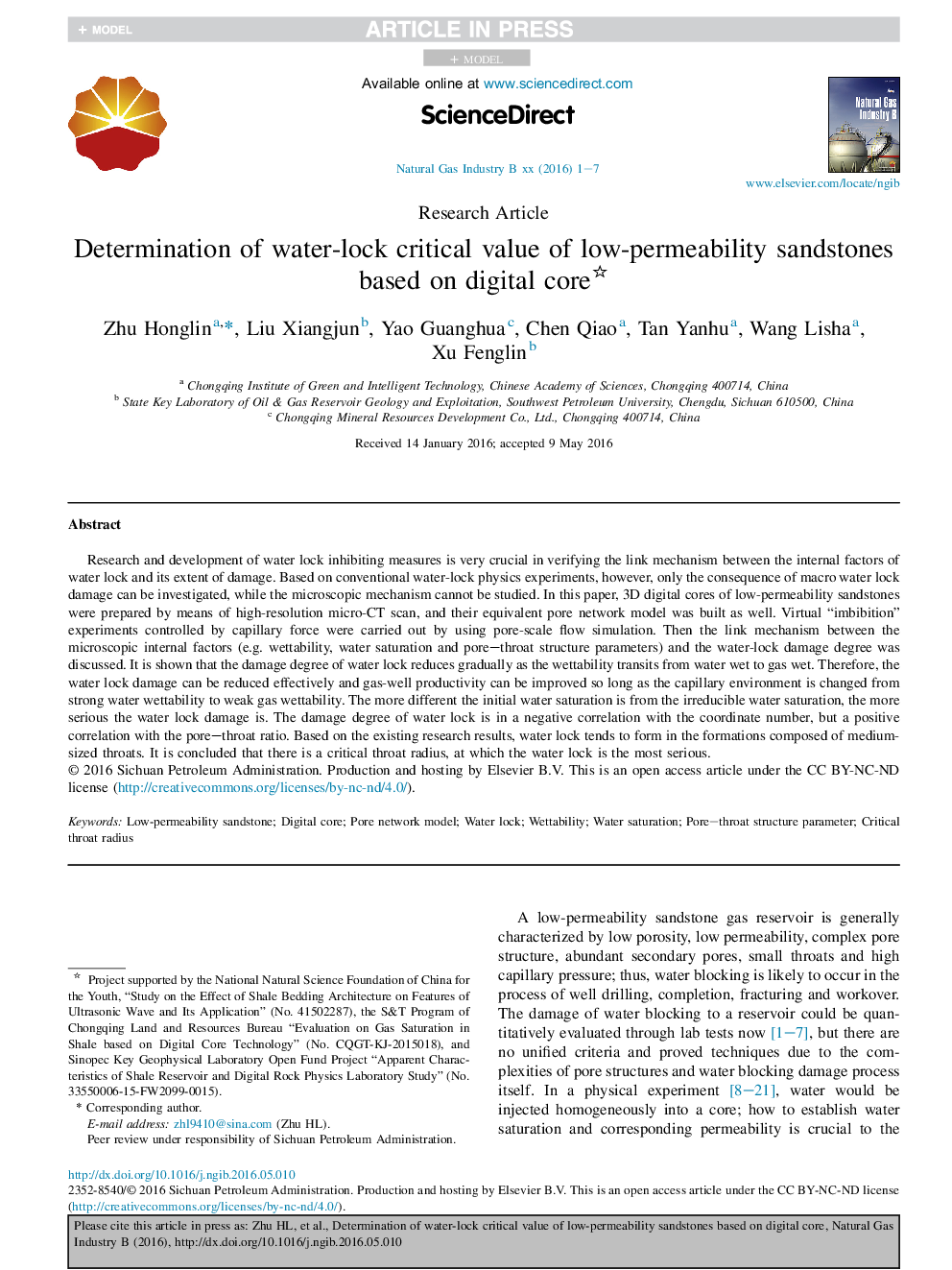| Article ID | Journal | Published Year | Pages | File Type |
|---|---|---|---|---|
| 8110097 | Natural Gas Industry B | 2016 | 7 Pages |
Abstract
Research and development of water lock inhibiting measures is very crucial in verifying the link mechanism between the internal factors of water lock and its extent of damage. Based on conventional water-lock physics experiments, however, only the consequence of macro water lock damage can be investigated, while the microscopic mechanism cannot be studied. In this paper, 3D digital cores of low-permeability sandstones were prepared by means of high-resolution micro-CT scan, and their equivalent pore network model was built as well. Virtual “imbibition” experiments controlled by capillary force were carried out by using pore-scale flow simulation. Then the link mechanism between the microscopic internal factors (e.g. wettability, water saturation and pore-throat structure parameters) and the water-lock damage degree was discussed. It is shown that the damage degree of water lock reduces gradually as the wettability transits from water wet to gas wet. Therefore, the water lock damage can be reduced effectively and gas-well productivity can be improved so long as the capillary environment is changed from strong water wettability to weak gas wettability. The more different the initial water saturation is from the irreducible water saturation, the more serious the water lock damage is. The damage degree of water lock is in a negative correlation with the coordinate number, but a positive correlation with the pore-throat ratio. Based on the existing research results, water lock tends to form in the formations composed of medium-sized throats. It is concluded that there is a critical throat radius, at which the water lock is the most serious.
Related Topics
Physical Sciences and Engineering
Energy
Energy Engineering and Power Technology
Authors
Honglin Zhu, Xiangjun Liu, Guanghua Yao, Qiao Chen, Yanhu Tan, Lisha Wang, Fenglin Xu,
